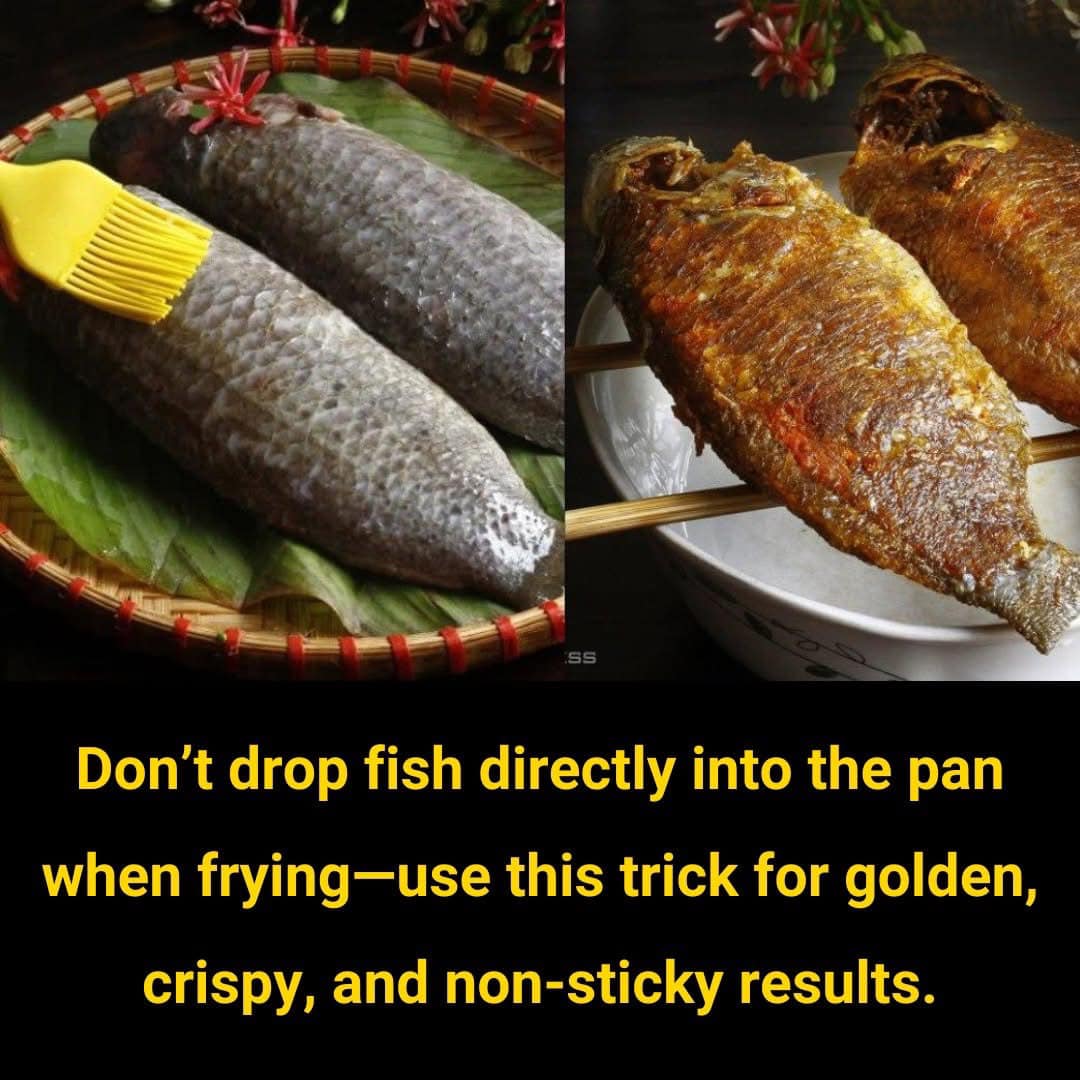Cooking fish can be a rewarding experience, offering a crispy exterior and tender, flavorful interior when done right. However, many home cooks encounter common issues such as fish sticking to the pan, breaking apart, or splattering oil everywhere. The good news is that with a few essential steps and tricks, you can fry fish to perfection without these common mishaps. In this guide, we’ll walk you through the proper method for frying fish, ensuring golden, crispy results every time.

Why You Shouldn’t Put Fish Directly into the Pan
One of the most critical mistakes people make when frying fish is placing it directly into the pan without proper preparation. Fish naturally contains a significant amount of moisture, and when that moisture comes into contact with hot oil, it can cause violent splattering, sticking, and tearing of the delicate skin. To prevent this, you need to prepare both the fish and the pan correctly.
Steps to Properly Fry Fish
Step 1: Prepare the Fish Thoroughly
Start by scaling the fish completely and removing the gills. Open the belly and clean out all the innards, ensuring no residue remains. Pay special attention to the black membrane lining the inside of the belly, as it can contribute to a fishy odor if not removed.
After cleaning, the fish will naturally have excess moisture on its surface. If you fry it in this state, you’ll encounter significant oil splatter and sticking. Take a few sheets of paper towels and pat the fish thoroughly, removing as much moisture as possible from both the surface and the belly cavity. Once the fish is dry, set it aside for later use.
Step 2: Prepare the Pan with Ginger
Before adding oil, you need to create a temporary non-stick coating on the pan. Heat the pan over medium-high heat until it’s thoroughly hot, then turn off the heat temporarily. Take a thick slice of fresh ginger and rub it along the bottom and sides of the hot pan. Ginger acts as a natural non-stick agent, creating a barrier between the fish and the metal surface of the pan.
Not only does this prevent the fish from sticking, but it also adds a subtle aroma to the pan, which helps neutralize the natural fishy smell.
Step 3: Heat the Oil Properly
Turn the heat back on and pour an appropriate amount of cooking oil into the pan. Allow the oil to heat up until it reaches a shimmering state. You’ll know it’s ready when you can feel distinct heat rising from the surface of the oil.
At this point, reduce the heat to medium to ensure even frying without burning the fish’s exterior.
Step 4: Carefully Place the Fish in the Pan
Once the oil is hot, gently place the prepared fish into the pan. Avoid dropping it in quickly, as this can cause oil to splash and create a mess. Instead, lower the fish slowly, skin-side down if it has skin, to allow it to settle without sticking.
Use medium heat to fry the fish slowly. Cooking over high heat may cause the outside to burn while leaving the inside undercooked. Patience is key in this step.
Step 5: Avoid Flipping Too Soon
Once the fish is in the pan, resist the urge to move or flip it too soon. Allow one side to cook thoroughly until it develops a golden, crispy crust. If you try to flip it prematurely, the fish is more likely to stick and break apart.
After the first side is perfectly golden and crisp, carefully flip the fish using a spatula or tongs. Cook the other side until it achieves the same level of crispiness.
When both sides are evenly cooked, remove the fish from the pan and place it on a paper towel-lined plate to absorb excess oil.
Tips and Tricks for Perfect Fried Fish
- Dry the Fish Thoroughly: Always pat the fish dry before frying. Moisture is the main cause of oil splatter and sticking.
- Use Ginger for a Non-Stick Surface: Rubbing a ginger slice on a hot pan creates a temporary non-stick layer and adds a subtle aroma.
- Maintain Medium Heat: Avoid frying fish over high heat, as it can cook unevenly and result in burnt edges.
- Don’t Flip Too Often: Let one side cook fully before flipping to prevent the fish from breaking apart.
- Clean the Belly Properly: Ensure that the fish’s belly is cleaned and the black membrane is removed to reduce any lingering fishy smell.
Why This Method Works
Fish is delicate, and frying it successfully depends heavily on preparation. Moisture on the fish’s surface is the primary cause of sticking and oil splatters. By patting the fish dry, heating the pan thoroughly, using ginger to create a non-stick layer, and maintaining medium heat, you’re creating the perfect environment for frying.
Ginger not only prevents sticking but also adds a subtle fragrance to the dish, enhancing the overall flavor. Additionally, by letting one side cook fully before flipping, you allow the natural sugars in the fish to caramelize, creating that golden, crispy finish we all love.
The Final Result
When done correctly, frying fish is a simple and rewarding process. You’ll end up with crispy, golden fish on the outside and tender, juicy meat on the inside. The ginger infusion adds a delicate aroma that balances out the natural flavors of the fish beautifully.
So the next time you plan to fry fish, don’t rush the process. Take the time to dry the fish, prep the pan, and use medium heat. With these techniques, you’ll avoid oil splatters, sticking, and broken pieces—resulting in a dish that looks as good as it tastes.
Happy frying, and enjoy your perfectly cooked fish!





